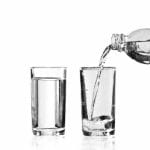Thankfully, over the years most households have become familiar with the various filtering processes that can make even the worst municipal tap water quite drinkable. But one question that is rarely asked is which contaminants are being found in household tap water? Exactly what is it that is being trapped in our carbon filters and is unfit for human consumption? Human contact with some of the contaminants found in tap water has been known to cause such acute conditions as diarrhea, vomiting and skin irritation.
Perhaps even more concerning than the temporary irritations caused by tap water contaminants is the long-term or chronic diseases to which they’ve been linked. These include neurotoxins and industrial-type chemicals that have been found in many public water systems, including the following four potential health risks.
Perchlorate: Imagine how this would impact your health – an explosive element that is often used to make rocket and missile fuel! This doesn’t sound like something anyone would want to drink, but because of poor disposal techniques and a lack of federal regulations this chemical is present in the drinking water of more than 20 million Americans over 43 states.
Before you start thinking that trace elements of this chemical cannot affect you, research has shown that drinking water contaminated with perchlorate is linked to thyroid dysfunction and the developmental health of infants and fetuses.
THMs and HAAs: Despite measures that require water treatment facilities to report byproduct levels of chlorine, as well as the EPA’s DBP Rule regulating stage 2 disinfectants and their byproducts, there have been several documented cases of water contaminated by THM and HAA. These dangerous contaminants have continued to reach the public through municipal water supplies since this rule was published. Absorption of THM and HAA into the skin and oral ingestion has been shown to cause cancer of the bladder, rectum, colon and breast.
Radium: While most of the neurotoxic chemicals found in water are the result of man-made processes, one pollutant is found naturally in untreated groundwater. Most of the radium found in drinking water can be removed through purification techniques like ion exchange, but trace amounts still remain and can be harmful over time. Studies have linked long-term radium exposure to significantly higher rates of liver, bone and breast cancer.
Arsenic: It’s hard to believe an element as hazardous a arsenic could be found in untreated groundwater, but this chemical is more likely to be present due to the mishandling of agricultural and industrial waste. This element can come from a variety of sources, but because of its lack of taste and odor it is often very difficult to detect. A harmless appearance, however, belies the fact that this is not a safe element to ingest. In fact, prolonged exposure to arsenic has been shown to accelerate the incidence of Type II Diabetes, as well as liver, lung and lymphatic cancers.
As scary as these contaminants may sound, tap water consumers don’t need to seek external water supplies. However, it is important to be aware of how each water filtration system works and which contaminants it removes. Whether you choose a carbon filter, reverse osmosis or another form of home water filtration, be sure to change the filters regularly and read the most recent water quality reports from your water supplier.
Photo Courtesy of Idea Go / FreeDigitalPhotos.net





